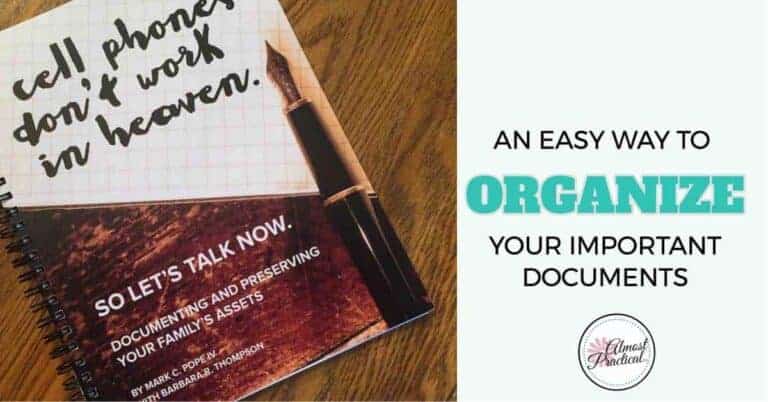10 Ways to Improve Tax Day Next Year
This post may contain affiliate links which means I make a commission if you shop through my links.
Disclosure Policy
So here we are – April 15th already. How did your tax day go?

Of course, no one likes to pay taxes – so I’m not asking how you liked tax day.
Rather I want to know how organized and in control you felt over your paperwork.
Because I always try to look for the silver lining – I like to use tax time as a way to put my financial house in order – which is exactly what I have been doing this past week.
Here are some ways you can turn April 15th to your advantage.
10 Ways to Improve Your Financial Organization For Tax Day Next Year
1. Create a Tax Folder for the Past Year
By “the past year” I am talking about the year of the tax return that was due today (which would be last year’s return).
If you don’t already have a tax folder set one up now.
This folder should work either with your current filing system or with the way you think.
Some good options are:
- a three ring binder with dividers
- a hanging green file that is expandable
- a manilla folder with a two hole punch prong fastener
- a pressboard classification file folder with multiple sections
My tax file of choice at this time is a three ring binder.
2. Organize Your Tax Folder for The Past Year
Once you have chosen your tool – set up sections for
- Tax Returns
- Payments
- Income
- Deductions
- Correspondence
- Business Papers and Reports
I also like to put an empty three ring binder pocket (if you are using a three ring binder) in the front of my binder.
This serves as a catch all for receipts and things that I need to process.
The important thing is that you actually take the time to process the things you place here on a regular basis.
3. Print Out Your Tax Returns
Print your completed tax returns and place them in the section of your tax folder that is designated for tax returns.
Only do this if you have a safe and secure place to store your tax folder. Remember that your tax returns contain private information like social security numbers and income numbers.
4. File Your Tax Documents
If you haven’t already, file all of your tax documents behind the appropriate tabs.
Now put your completed tax file away so it’s ready for you to pull out next year to refer to at tax time.
5. Set Up Your Tax File for the Current Tax Year
By current tax year – I mean the year that is happening right now as you read this article.
I know, the year isn’t over yet.
But if you set your tax file up right now – you can use it to collect all those important pieces of paper that come in throughout the year.
If you make a charitable donation today – even if you do it online – you can print out and store the receipt behind the Deductions tab in your current year tax file.
If you make a tax payment – same thing. Print out, collect, and store all of the information that relates to taxes right in this folder.
When April 15th rolls around again next year – your work load will be so much lighter because you are putting things together all year long.
6. Evaluate Your Tax Withholding
Now that your taxes are done for last year, it should be clear to you whether you are having enough taxes withheld from your paycheck or paying enough estimated tax.
You should work with your accountant on this because the withholding tables have changed recently – but this is a general idea:
- if you owe tax with your tax return, then you did not pay enough in throughout the year
- if you are getting a refund, then you may have withheld too much depending on the size of the refund.
- always remember that if your income situation has changed or changes then your tax situation will also change.
7. Evaluate Your Current Bank and Credit Card Accounts
Tax time is actually a great time to take stock of the bank and credit card accounts that you have open.
Consolidating several accounts down into just a few can make managing your finances a lot easier.
Consider closing accounts that you don’t use or taking the time to find lower interest rate credit cards if you carry a balance.
8. Plan How to Use Your Tax Refund
Tax time is also a good time to put together a household budget – especially if you are getting a refund.
Don’t let that refund disappear. Put it away and make a plan for how to use it.
9. Get an Accountant
If you used an accountant to do your taxes, were you happy with the service?
Maybe you didn’t use an accountant but feel that you should have.
Rushing around at the last minute looking for a good accountant is not a good idea.
But, right now you have a whole year to find just the right person.
Start asking around for recommendations so you have things lined up and ready to go.
10. Organize Your Business Finances
Using a program like Quickbooks Self Employed or FreshBooks can help you to keep your business finances in order.
Keep your finances up to date throughout the year so you don’t have to scramble when the returns are due.
Tax Day is Easy if You Are Organized
If you start planning for next April 15th right now – you can take a lot of the stress out of tax time.







